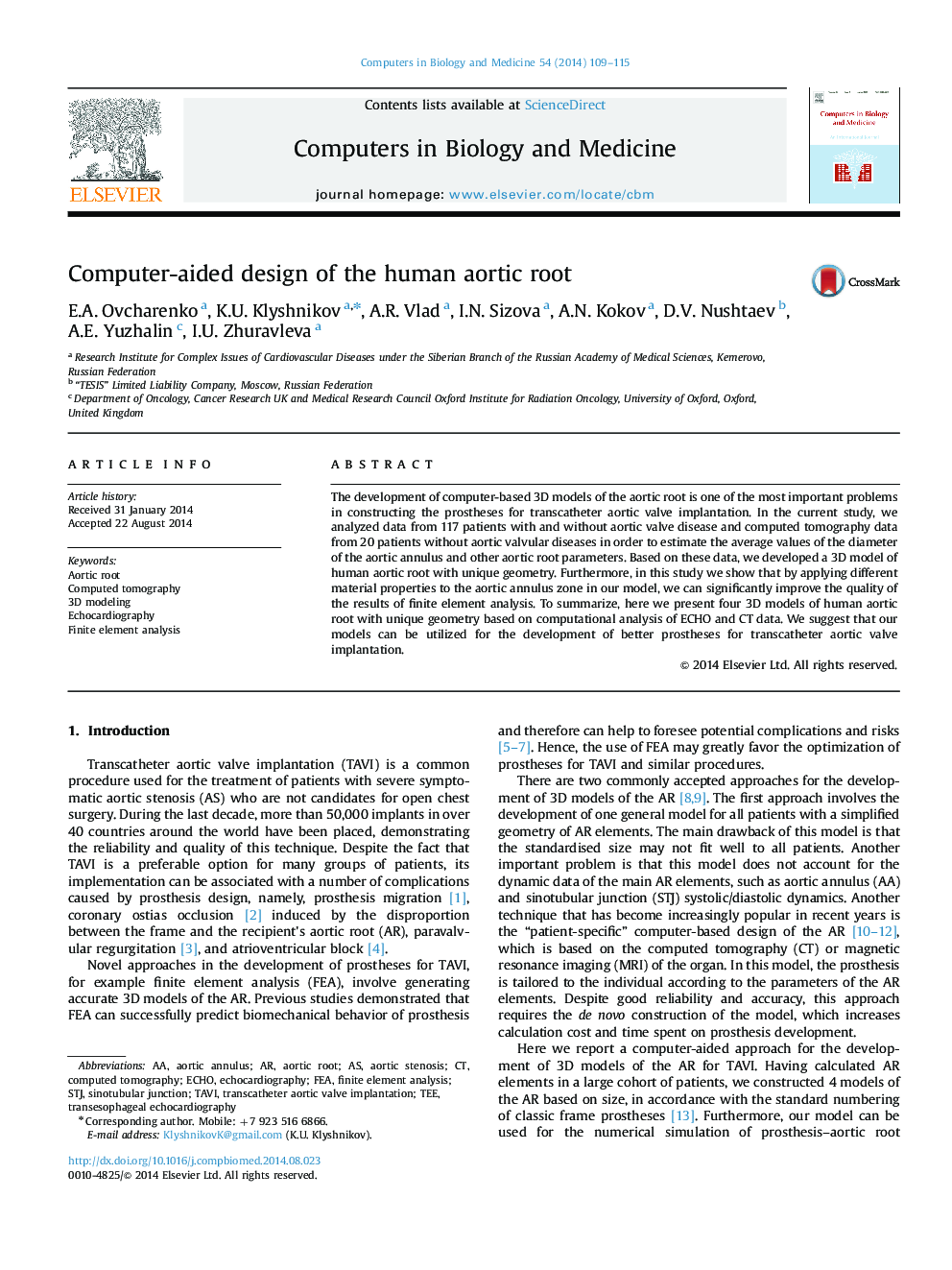| Article ID | Journal | Published Year | Pages | File Type |
|---|---|---|---|---|
| 504910 | Computers in Biology and Medicine | 2014 | 7 Pages |
•We have created four typical models of human aortic root based on ECHO and CT data.•We performed detailed analysis of aortic root elements dynamic during cardiac cycle.•The separate material description of annulus and sinuses can improve FEA results.
The development of computer-based 3D models of the aortic root is one of the most important problems in constructing the prostheses for transcatheter aortic valve implantation. In the current study, we analyzed data from 117 patients with and without aortic valve disease and computed tomography data from 20 patients without aortic valvular diseases in order to estimate the average values of the diameter of the aortic annulus and other aortic root parameters. Based on these data, we developed a 3D model of human aortic root with unique geometry. Furthermore, in this study we show that by applying different material properties to the aortic annulus zone in our model, we can significantly improve the quality of the results of finite element analysis. To summarize, here we present four 3D models of human aortic root with unique geometry based on computational analysis of ECHO and CT data. We suggest that our models can be utilized for the development of better prostheses for transcatheter aortic valve implantation.
